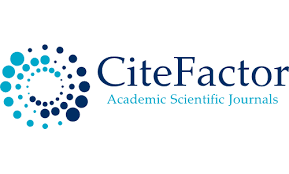Analysis Of Anthroponyms Used in Amir Temur's Work "Temur Tuzuklari"
Keywords:
Anthroponyms, Ideonyms, Politonyms, Ergonims, PhaleronymsAbstract
This article examines anthroponyms based on ethnolinguistic factors and provides an overview of anthroponyms. In the example of "Temur's rules" the features of famous nouns are revealed. The anthroponymic factors used in the play are mainly classified according to their scope and structure.
References
Бегматов Э.А. Ўзбек исмлари маъноси (изохли луғат). 14 600 исмлар изохи. 2-нашри. – Тошкент: Ўзбекистон миллий энциклопедияси (луғат), 2007. – 608 с.
Бекмуродов Н. Чиройли исмлар тўплами. – Тошкент: Янги аср авлоди, 2010. – 376 с.
Бондаренко Е. В. Межкультурная семейная коммуникация как особый тип общения.: Автореф. дисс. … канд. филол. наук. – Волгоград, 2010. – 22 с.
Галиуллина Г.Р. Татарская антропонимия в лингво-культурологическом аспекте.: Автореф. дисс… докт. филол. наук. – Ташкент, 2004. – 25 с.
Доспанова Д.У. Иноязычная орнаментика текста (на материале каракалпакизмов русскоязычной прозы): Автореф. дисс… канд. филол. наук. – Ташкент, 2004. – 25 с.
Егорова Т. П. Семиотическая функция имени // Ономастика. Материалы к серии Народы мира и культура. – Вып. ХХV. – Ч. I. – М.: РАН, 1993. – С. 21-28.
Ермолович Д.И. Имена собственные на стыке языков и культур. Заимствование и передача имён собственных с точки зрения лингвистики и теории перевода. М.: Р.Валент, 2001. – 133 с.
Кубрякова Е. С. Язык и знание. – М.: Языки славянской культуры, 2004,- 560 с.
Нафасов Т., Маркаев М. Узбекские этноантропонимы // Ономастика Узбекистана. Сб. тез. II респ. Научно-практ. конф. – Карши, 1989. – С. 136-140.
Downloads
Published
Issue
Section
License

This work is licensed under a Creative Commons Attribution-NonCommercial 4.0 International License.
User Rights
Under the Creative Commons Attribution-NonCommercial 4.0 International (CC-BY-NC), the author (s) and users are free to share (copy, distribute and transmit the contribution).
Rights of Authors
Authors retain the following rights:
1. Copyright and other proprietary rights relating to the article, such as patent rights,
2. the right to use the substance of the article in future works, including lectures and books,
3. the right to reproduce the article for own purposes, provided the copies are not offered for sale,
4. the right to self-archive the article.













